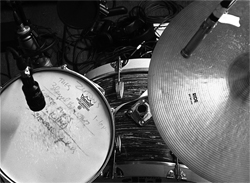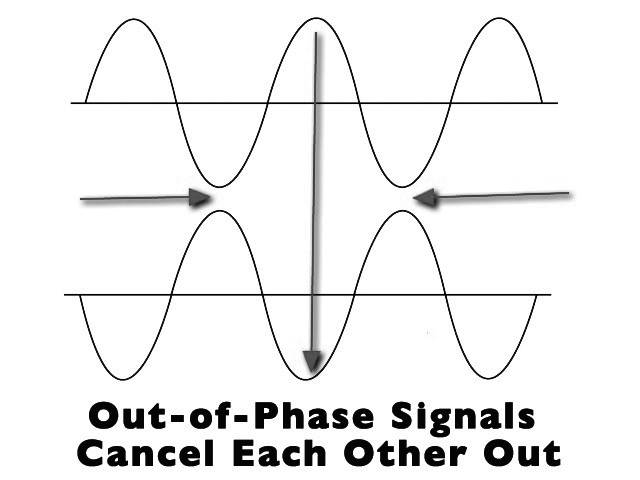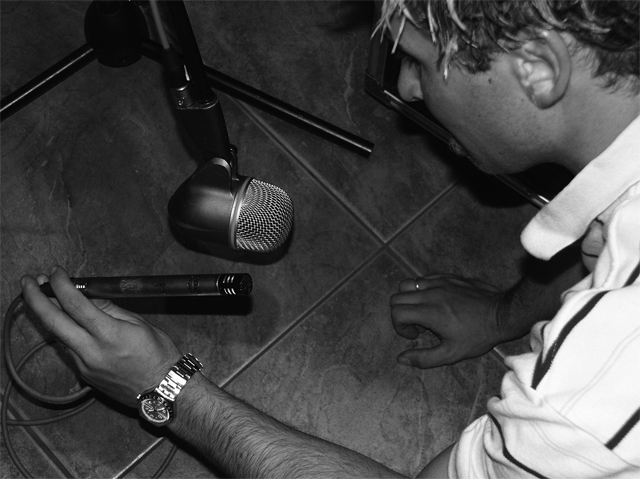
Checking Phase The Easy Way
Here’s a very easy way to check mic phase, although not as precisely as method #2 shown later.
After you get a mix balance of the kit together, flip the phase selector on each mic channel one at a time either on your console or on the DAW.
Whichever position has the most low end, leave it there. Do this on every mic in the kit (select the overhead and room mics in a pair, but check the left mic against the right as well).
Checking Phase The Slightly More Difficult Way
This method takes a bit more work, but you’ll know for sure if you have a mic cable that’s wired backward. Also, you really have to have another person with you to make this work. It’s a two-man operation.
First you have to pick a mic and make it your “reference.” Any mic on the kit will do, but it’s easier to pick an overhead or a mic that can easily come off the stand.
Now take your reference mic and put it next to another mic on the kit, say the kick drum mic, as in Figure 3. Make sure that each mic is at the exact same volume level in the speakers, not fader level.
Now have someone talk into the mic while you switch the phase selector on either the console or DAW. Again, choose the selection that sounds the fullest.
Do this to each microphone. Any channel that has its phase selector different from all the others has a mis-wired cable. Make sure you mark it so you don’t have the same problem again!
Times When You Might Want The Phase Reversed
There are times when you should definitely consider flipping the phase before you start mixing.
As we said before, there may be some acoustic phase issues as well because even though a mic may be further away than another, it may still be picking up the same source.
In the following cases, the phase should be flipped to overcome an acoustic phase problem.
An Under-Snare Mic: The under-snare mic should just about always be flipped out of-phase.
Any Under-Drum Mic: Anytime a mic is placed underneath a drum, it’s phase should almost always be flipped
out of phase.
Room Mics: Depending upon where they’re placed, how much room reflection they’re receiving, and how high they’re used in the mix, sometimes the room mics sound a lot better if the phase is reversed.
Overhead Mics in Extremely Rare Cases: Once again, it depends upon how high they’re placed above the kit, what kind of reflections they’re receiving and if they’re the main sound of the kit, but on rare occasions it might sound better (meaning fuller) if the phase is flipped.
Editor Note: This article is the first in a series on drums, excerpted from Bobby Owsinki’s “The Drum Recording Handbook”. Other articles in the series are available here.
To acquire this book, click over to the ProSoundWeb Book Store. NOTE: ProSoundWeb readers receive free shipping when entering promotional code PSW at checkout. (offer valid to U.S. residents, applies only to media mail shipping, additional charges may apply for expedited mailing services).



